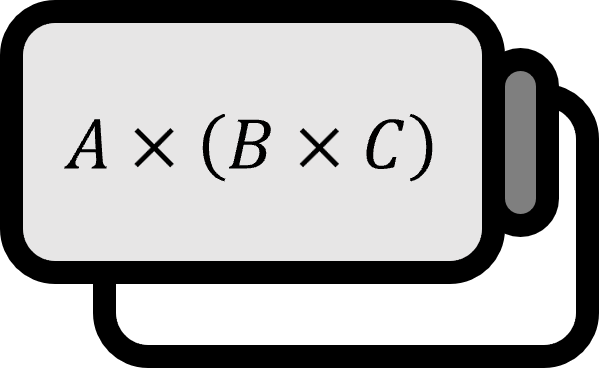Definition and Properties of Vector Areas
Definition

For a given surface $S$, the following integral is called the vector area of $S$.
$$ \mathbf{a} := \int_{\mathcal{S}} d \mathbf{a} $$
Description

As an example, let’s calculate the vector area of a hemisphere with a radius of $R$. It is $d \mathbf{a} = R^{2}\sin\theta d\theta d\phi \hat{\mathbf{r}}$. Here,
$$ \hat{\mathbf{r}} = \cos\phi \sin\theta \hat{\mathbf{x}} + \sin\phi \sin\theta\hat{\mathbf{y}} + \cos\theta\hat{\mathbf{z}} $$
when integrated over the region of the northern hemisphere, both $\hat{\mathbf{x}}$ and $\hat{\mathbf{y}}$ components cancel out, leaving only the $\hat{\mathbf{z}}$ component. Thus, we obtain the following.
$$ \begin{align*} \mathbf{a} &= \int_{\phi=0}^{2\pi} \int_{\theta=0}^{\pi/2} R^{2}\sin\theta \cos\theta d\theta d\phi \hat{\mathbf{z}} \\ &= 2\pi R^{2} \int_{\theta=0}^{\pi/2} \sin\theta \cos\theta d\theta \hat{\mathbf{z}} \\ &= 2\pi R^{2} \dfrac{1}{2} \hat{\mathbf{z}} \\ &= \pi R^{2} \hat{\mathbf{z}} \end{align*} $$
The integral on $\theta$ is justified by the table of integrals of trigonometric functions at $(1)$.
Properties
The vector area of a closed surface is always $\mathbf{a} = \mathbf{0}$.
The vector area of surfaces with the same boundary is always the same.
The following integral holds. $$ \mathbf{a} = \dfrac{1}{2}\oint \mathbf{r} \times d \mathbf{l} $$
For any constant vector $\mathbf{c}$, the following is true. $$ \oint (\mathbf{c} \cdot \mathbf{r}) d \mathbf{l} = \mathbf{a} \times \mathbf{c} $$
